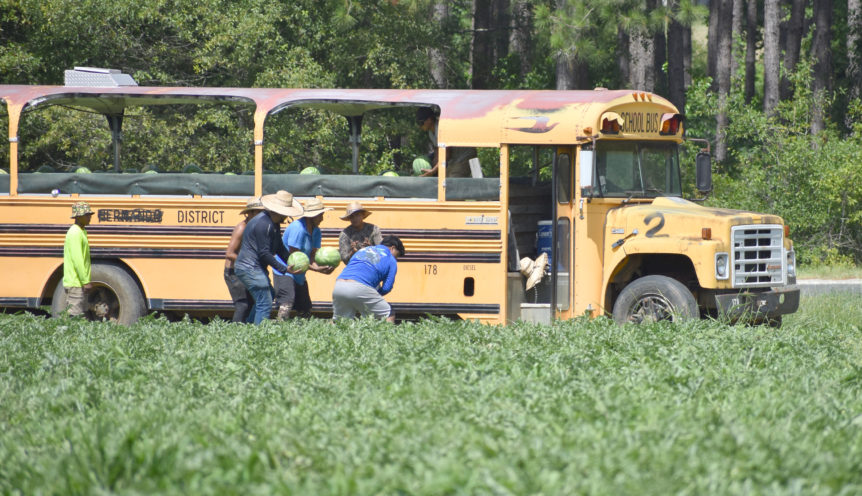
By Clint Thompson
Specialty crop growers scored another significant win this week when the Department of Labor (DOL) released an interim final rule revising the methodology used to determine the Adverse Effect Wage Rates (AEWR) for H-2A workers.
Under the new interim final rule, the DOL will base AEWRs on state-level wage data from the Bureau of Labor Statistics’ Occupational Employment and Wage Statistics survey rather than the USDA Farm Labor Survey, which was previously used.

Chris Butts, executive director of the Georgia Fruit and Vegetable Growers Association (GFVGA), explains the impact of the updated ruling.
“I think the key thing for our growers is that it establishes a methodology for determining the Adverse Effect Wage Rate that is more market based and can return those rates where they match the economic realities in our rural communities,” Butts said. “We had those inflated wage rates for so long over the last three years – 31% increases over those three years – that the program was becoming unsustainable and unaffordable for our users. This rule change restores some sanity back to that process and will provide much more realistic pay rates for H-2A users. All of our guys are extremely reliant on the program for labor.”
Rule Specifics
Under the new rule, the AEWRs for Level 1 workers (entry-level and less experienced) are $12.27 per hour not including the housing adjustment decrease of $1.75 per hour if housing is provided. The AEWRs for Level 2 workers (experienced and higher skilled) are $16.22 per hour if not including the housing adjustment decrease of $1.75 per hour if housing is provided.
“For three years we have been working to understand how the Adverse Effect Wage Rate was determined. We were seeking that information but never could get a full understanding of how those wage rates were determined, and we certainly couldn’t get a clear understanding of how we had a 31% increase over three years,” Butts said. “But with this new system, the methodology is clearly defined and tied to the OEWS that is done by the Department of Labor.
“It is a much bigger sampling across the country. The rule also stipulates that they will expand that survey in the future to include agricultural operations. It should give us a much more market based and realistic wage rate going forward but will also hopefully return some stability to it.”
The rule was published in the Federal Register on Thursday. Comments are being accepted for a period of 60 days. Growers with existing H-2A contracts will still be subject to the pay rates included in those orders.

AFVGA’s Blake Thaxton
Blake Thaxton, executive director of the Alabama Fruit and Vegetable Growers Association (AFVGA), added, “Super pleased, just thankful for the Trump Administration and the Department of Labor’s decision to make this program more reasonable. As you know this is really our only avenue for labor for a lot of our farms. We’re excited that this will be a more sustainable situation. We don’t feel like the work is done. There are still things to be done to solidify the program into the future. This is one of many really good steps that this administration has taken to keep the program viable for our members.”










